     
|
Saint-Laurent-les-Bains in Ardèche
|
     
|
The village of Saint-Laurent-les-Bains nestles in a steep-sided valley in the Ardèche mountains, bordering the Lozère region. Renowned since Roman times for its thermal waters, which gush forth at fifty-three degrees Celsius, the local economy relies primarily on thermal spas and ecotourism, which sustain this mid-mountain area. The village is crisscrossed by numerous hiking trails, including the GR72 and the GRP Le Cévenol. A Carolingian watchtower once allowed for the monitoring of activity in the Borne Valley and along ancient routes such as the Régordane Way. The surrounding landscape is characterized by dense forests and steep slopes. The local flora is remarkably diverse, with mountain and Mediterranean species growing side-by-side depending on the aspect of the rocky hillsides.
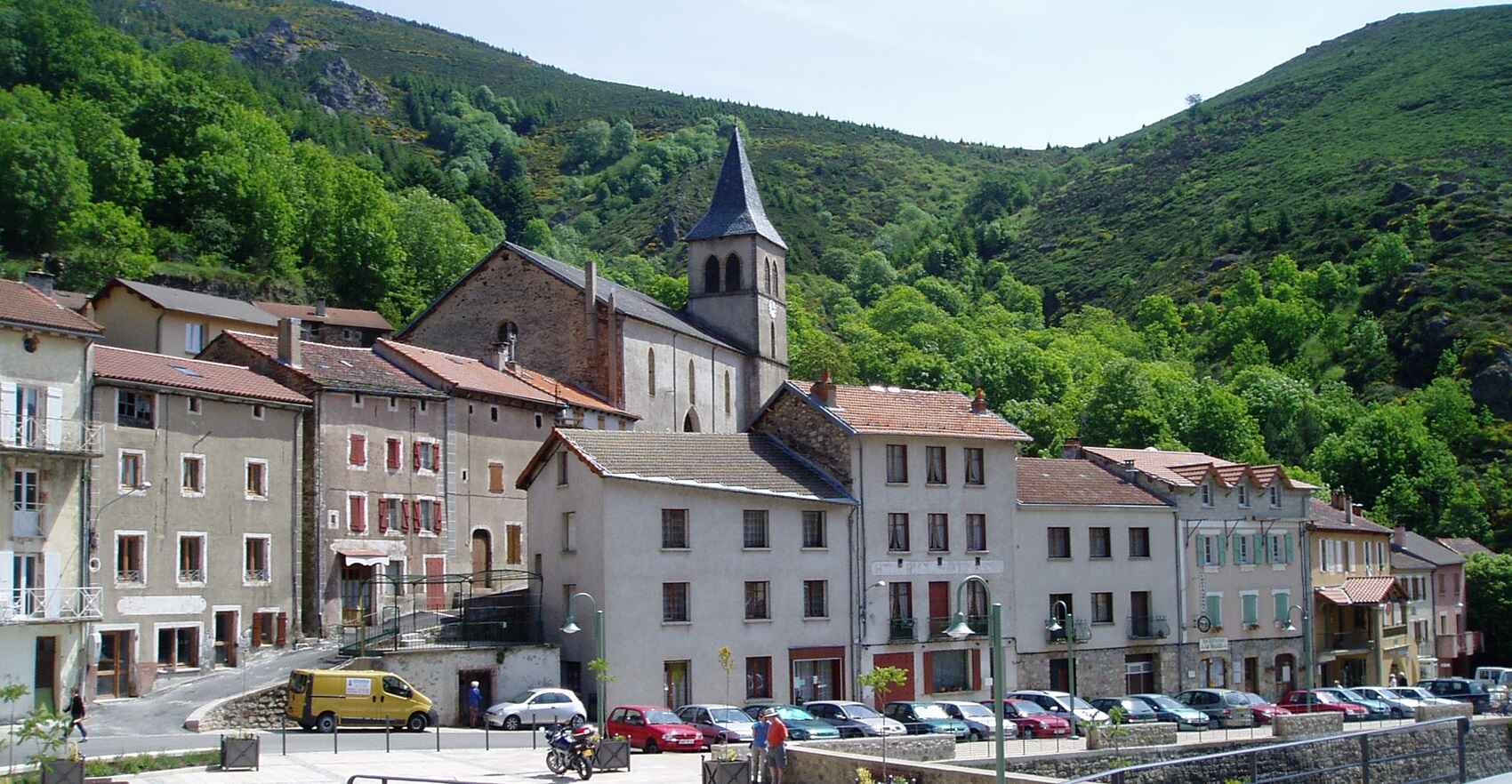
In a remote corner of Ardèche, where the mountains embrace the sky, lies the village of Saint Laurent-les-Bains. This jewel of Auvergne-Rhône-Alpes is a sanctuary of well-being, cradled by the whisper of its thermal springs. These miraculous waters, a heritage of the earth, offer their soothing warmth to souls in search of healing, driving away rheumatism and breathlessness.
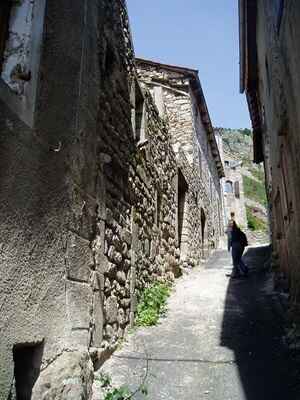 Saint Laurent-les-Bains is also a living tableau where every mountain path is an invitation to adventure. Hikers find their paradise here, walking on paths bordered by grand panoramas, where the pure air becomes complicit in their exploits. Here, nature is queen, and every outdoor activity becomes a hymn to the wild life that pulses in the heart of these preserved lands.
Saint Laurent-les-Bains is also a living tableau where every mountain path is an invitation to adventure. Hikers find their paradise here, walking on paths bordered by grand panoramas, where the pure air becomes complicit in their exploits. Here, nature is queen, and every outdoor activity becomes a hymn to the wild life that pulses in the heart of these preserved lands.
In the heart of the Massif du Tanargue, where the echoes of Taranis' thunder resonate, unfolds a landscape where the sun caresses the gorges and ridges, and where the air is scented with thyme and heather.
It is here, on a plateau bathed in serenity, that Trappist monks, disciples of the Cistercian order, built the Abbey of Notre Dame des Neiges in 1850, a haven of peace that during the dark hours of World War II became the refuge of the famous Robert Schumann.
From the healing waters of Saint Laurent les Bains, the ascent to the Abbey of Notre Dame des Neiges begins, following the GR®72 trail. This path, like a promise of escape, winds toward La Bastide Puylaurent in Lozère, then flourishes in the valley of the Allier.
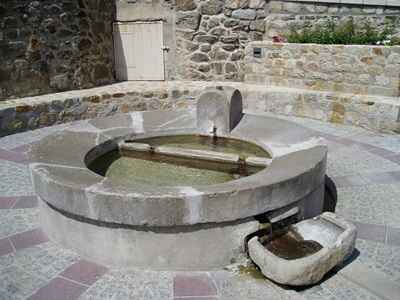 In the depths of the Central Massif stands proudly the Tanargue, a stone sentinel piercing the skies at 1,511 meters altitude. The Grand Tanargue, like a monarch, reigns over a domain extending majestically from west to east, over a distance of 15 to 20 kilometers. Its kingdom, with an area of 4,726 hectares, is surrounded by a perimeter of about 50 kilometers.
In the depths of the Central Massif stands proudly the Tanargue, a stone sentinel piercing the skies at 1,511 meters altitude. The Grand Tanargue, like a monarch, reigns over a domain extending majestically from west to east, over a distance of 15 to 20 kilometers. Its kingdom, with an area of 4,726 hectares, is surrounded by a perimeter of about 50 kilometers.
It is called the "Mountain of Thunder," a nickname that resonates with the power of the elements. The massif is the jewel of a Cévennes climate, a theater where some of the most spectacular precipitation scenes in mainland France unfold. Every year, the heavens unleash their fury in a deluge that nourishes the earth and forges the character of these places. The Tanargue, with its reliefs sculpted by time, its rocks telling millennia-old stories, and its atmosphere soaked by abundant rains, is an icon of Ardèche. It inspires storytellers and artists, who draw from its wild features the ink and colors needed to paint tales and pictures where nature is queen.
All around, the Corniche du Vivarais Cévenol reveals its treasures, the fir forests of Mont Mézenc whisper ancestral secrets, and the road of the lakes or that of the Sucs, these hills frozen by time and volcanic fire, invite exploration. The Gorges du Chassezac sculpt the landscape, while the medieval village of La Garde-Guérin in Lozère stands watch, unchanging. The Vivarais, like a patchwork of lands and stories, once spread over a mosaic of territories that today merge into the department of Ardèche. Its borders extended, embracing fragments of Gard, Drôme, Lozère, and Haute-Loire, barely touching Vaucluse.
In this province, the High Vivarais and the Low Vivarais share the space, the former rising in the north, the latter extending in the south. The mountains of Vivarais, stone sentinels at the eastern border of the Central Massif.
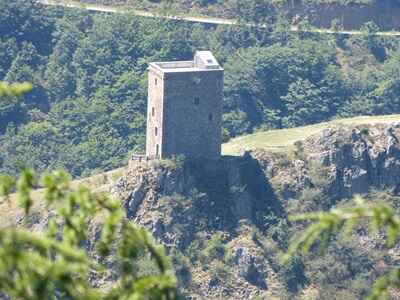 The tower of Saint Laurent les Bains, a stone sentinel, rises proudly on a rocky spur dominating the village. Erected in the 9th century, it has endured the ages, its six floors preserved by the villagers as a sanctuary. Perched high above the valley of the Borne, the village is crowned by the majestic granite of Trois-Seigneurs, whose slopes descend to the roofs it overlooks by more than a hundred meters, watching over the souls below.
The fame of the thermal spa of Saint-Laurent-les-Bains dates back to Roman times, its waters at 53° celebrated for their therapeutic virtues.
The tower of Saint Laurent les Bains, a stone sentinel, rises proudly on a rocky spur dominating the village. Erected in the 9th century, it has endured the ages, its six floors preserved by the villagers as a sanctuary. Perched high above the valley of the Borne, the village is crowned by the majestic granite of Trois-Seigneurs, whose slopes descend to the roofs it overlooks by more than a hundred meters, watching over the souls below.
The fame of the thermal spa of Saint-Laurent-les-Bains dates back to Roman times, its waters at 53° celebrated for their therapeutic virtues.
The Source of Saint-Laurent, born from the volcanic entrails of the earth, has been praised since the Middle Ages for its benefits. Treatments such as weightless mud baths, showers in thermal swimming pools, compresses, and vaporarium sessions are provided in the intimacy of three thermal establishments, where waters flow through underground channels to offer healing and comfort to the many annual visitors.
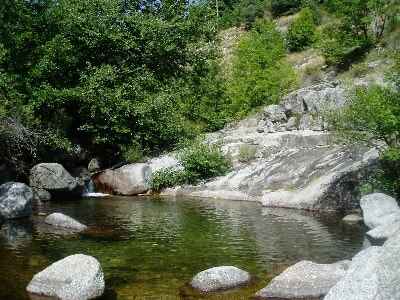 In the depths of the earth, under the Massif du Tanargue, flows a source of rare purity, the hyperthermal water of Saint-Laurent-les-Bains. Comparable to the illustrious water of Wildbad-Gastein, it is metal-free and gas-free, evoking the warm embraces of the Tyrolean Alps. Its magic works gently, soothing the mind after teasing the senses.
In the depths of the earth, under the Massif du Tanargue, flows a source of rare purity, the hyperthermal water of Saint-Laurent-les-Bains. Comparable to the illustrious water of Wildbad-Gastein, it is metal-free and gas-free, evoking the warm embraces of the Tyrolean Alps. Its magic works gently, soothing the mind after teasing the senses.
The waters of Saint-Laurent, whether ingested or absorbed in baths and showers, are a balm for the soul and body. They are tonic, diaphoretic, diuretic, and possess this almost magical quality of awakening dormant pains, those rheumatic ailments thought to be forgotten. And although their reappearance may come as a surprise, it is often the harbinger of an imminent healing.
10 km from La Bastide and 2 km from Saint-Laurent-les-Bains, at the Pont de Ceytrou, the Borne, a cévenol river, truly embodies aquatic paradise. Its crystal-clear and invigorating waters invite swimming, offering a refreshing getaway under the generous Ardèche sun. At the bridge, following the path that runs along the course of the Borne, you will discover beautiful spots to swim in granite basins.
The Borne, on its journey of 35.5 kilometers, winds through picturesque landscapes, beginning its course at the Col de la Croix de Bauzon. It is the trusted tributary of the Chassezac, joining the latter on the left bank, where the borders of Pied-de-Borne and Sainte-Marguerite-Lafigère meet in a harmonious confluence. This watercourse, a tributary of the Rhône, weaves its way through the valley, sculpting the land and nourishing the wildlife and flora with its generous waters.

Former holiday hotel with a garden along the Allier, L'Etoile Guest House is located in La Bastide-Puylaurent between Lozere, Ardeche, and the Cevennes in the mountains of Southern France. At the crossroads of GR®7, GR®70 Stevenson Path, GR®72, GR®700 Regordane Way, GR®470 Allier River springs and gorges, GRP® Cevenol, Ardechoise Mountains, Margeride. Numerous loop trails for hiking and one-day biking excursions. Ideal for a relaxing and hiking getaway.
Copyright©etoile.fr

 Saint Laurent-les-Bains is also a living tableau where every mountain path is an invitation to adventure. Hikers find their paradise here, walking on paths bordered by grand panoramas, where the pure air becomes complicit in their exploits. Here, nature is queen, and every outdoor activity becomes a hymn to the wild life that pulses in the heart of these preserved lands.
Saint Laurent-les-Bains is also a living tableau where every mountain path is an invitation to adventure. Hikers find their paradise here, walking on paths bordered by grand panoramas, where the pure air becomes complicit in their exploits. Here, nature is queen, and every outdoor activity becomes a hymn to the wild life that pulses in the heart of these preserved lands. In the depths of the Central Massif stands proudly the Tanargue, a stone sentinel piercing the skies at 1,511 meters altitude. The Grand Tanargue, like a monarch, reigns over a domain extending majestically from west to east, over a distance of 15 to 20 kilometers. Its kingdom, with an area of 4,726 hectares, is surrounded by a perimeter of about 50 kilometers.
In the depths of the Central Massif stands proudly the Tanargue, a stone sentinel piercing the skies at 1,511 meters altitude. The Grand Tanargue, like a monarch, reigns over a domain extending majestically from west to east, over a distance of 15 to 20 kilometers. Its kingdom, with an area of 4,726 hectares, is surrounded by a perimeter of about 50 kilometers. The tower of Saint Laurent les Bains, a stone sentinel, rises proudly on a rocky spur dominating the village. Erected in the 9th century, it has endured the ages, its six floors preserved by the villagers as a sanctuary. Perched high above the valley of the Borne, the village is crowned by the majestic granite of Trois-Seigneurs, whose slopes descend to the roofs it overlooks by more than a hundred meters, watching over the souls below.
The fame of the thermal spa of Saint-Laurent-les-Bains dates back to Roman times, its waters at 53° celebrated for their therapeutic virtues.
The tower of Saint Laurent les Bains, a stone sentinel, rises proudly on a rocky spur dominating the village. Erected in the 9th century, it has endured the ages, its six floors preserved by the villagers as a sanctuary. Perched high above the valley of the Borne, the village is crowned by the majestic granite of Trois-Seigneurs, whose slopes descend to the roofs it overlooks by more than a hundred meters, watching over the souls below.
The fame of the thermal spa of Saint-Laurent-les-Bains dates back to Roman times, its waters at 53° celebrated for their therapeutic virtues. In the depths of the earth, under the Massif du Tanargue, flows a source of rare purity, the hyperthermal water of Saint-Laurent-les-Bains. Comparable to the illustrious water of Wildbad-Gastein, it is metal-free and gas-free, evoking the warm embraces of the Tyrolean Alps. Its magic works gently, soothing the mind after teasing the senses.
In the depths of the earth, under the Massif du Tanargue, flows a source of rare purity, the hyperthermal water of Saint-Laurent-les-Bains. Comparable to the illustrious water of Wildbad-Gastein, it is metal-free and gas-free, evoking the warm embraces of the Tyrolean Alps. Its magic works gently, soothing the mind after teasing the senses.